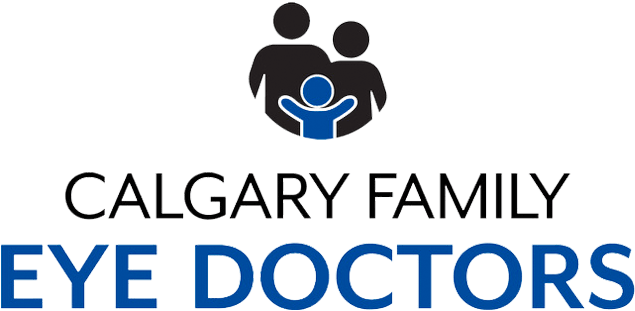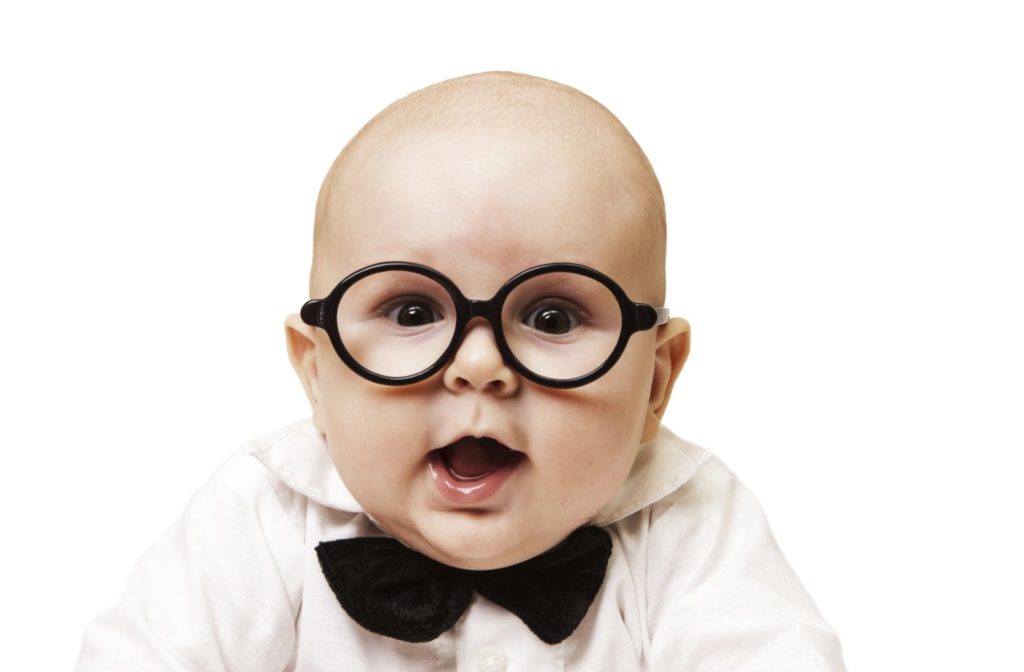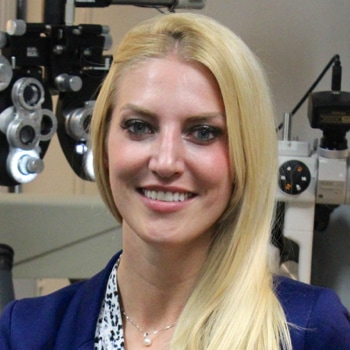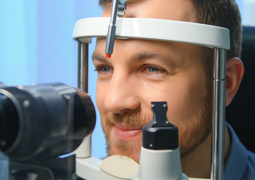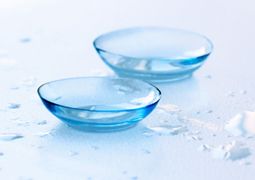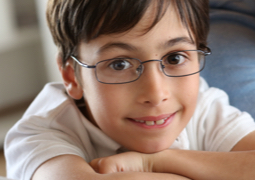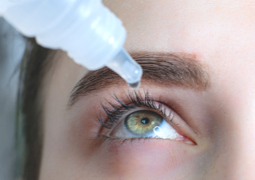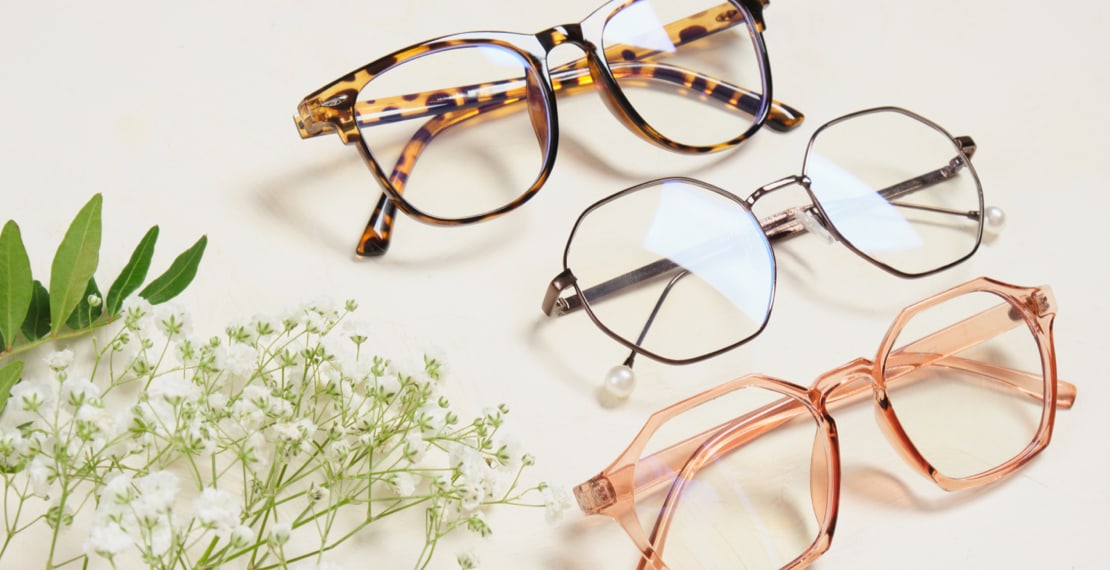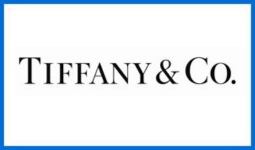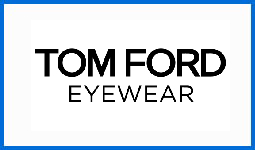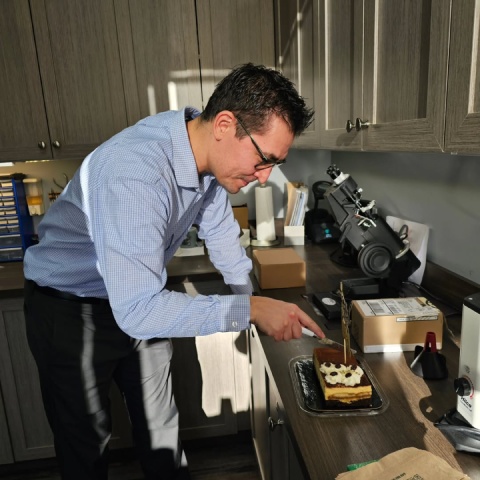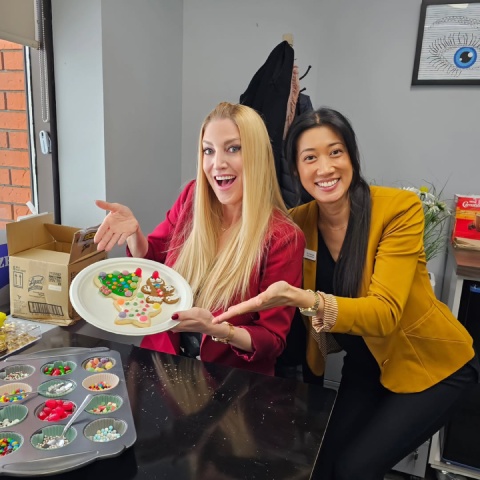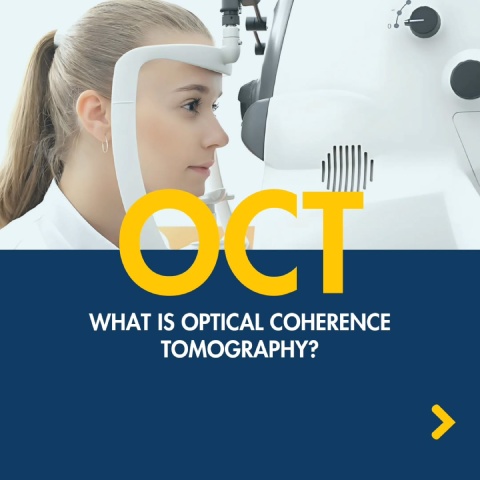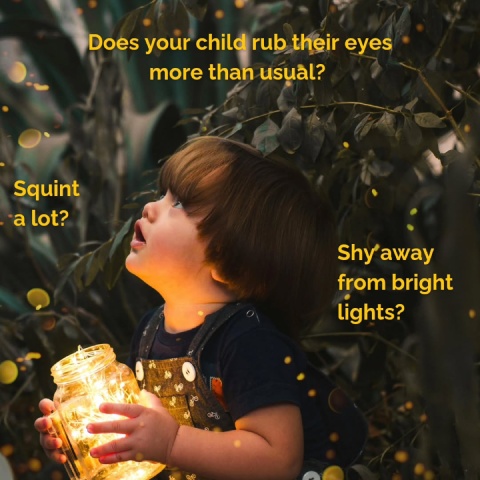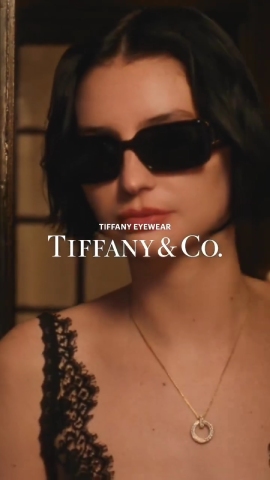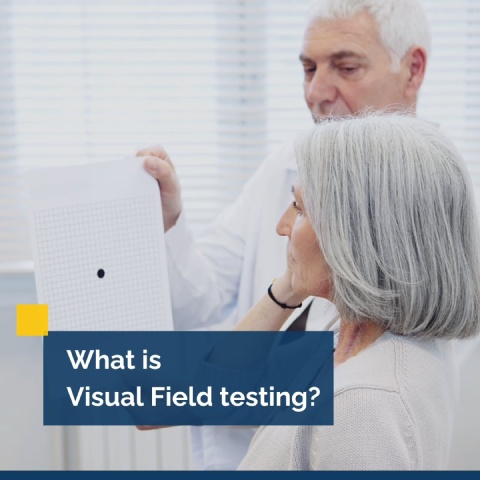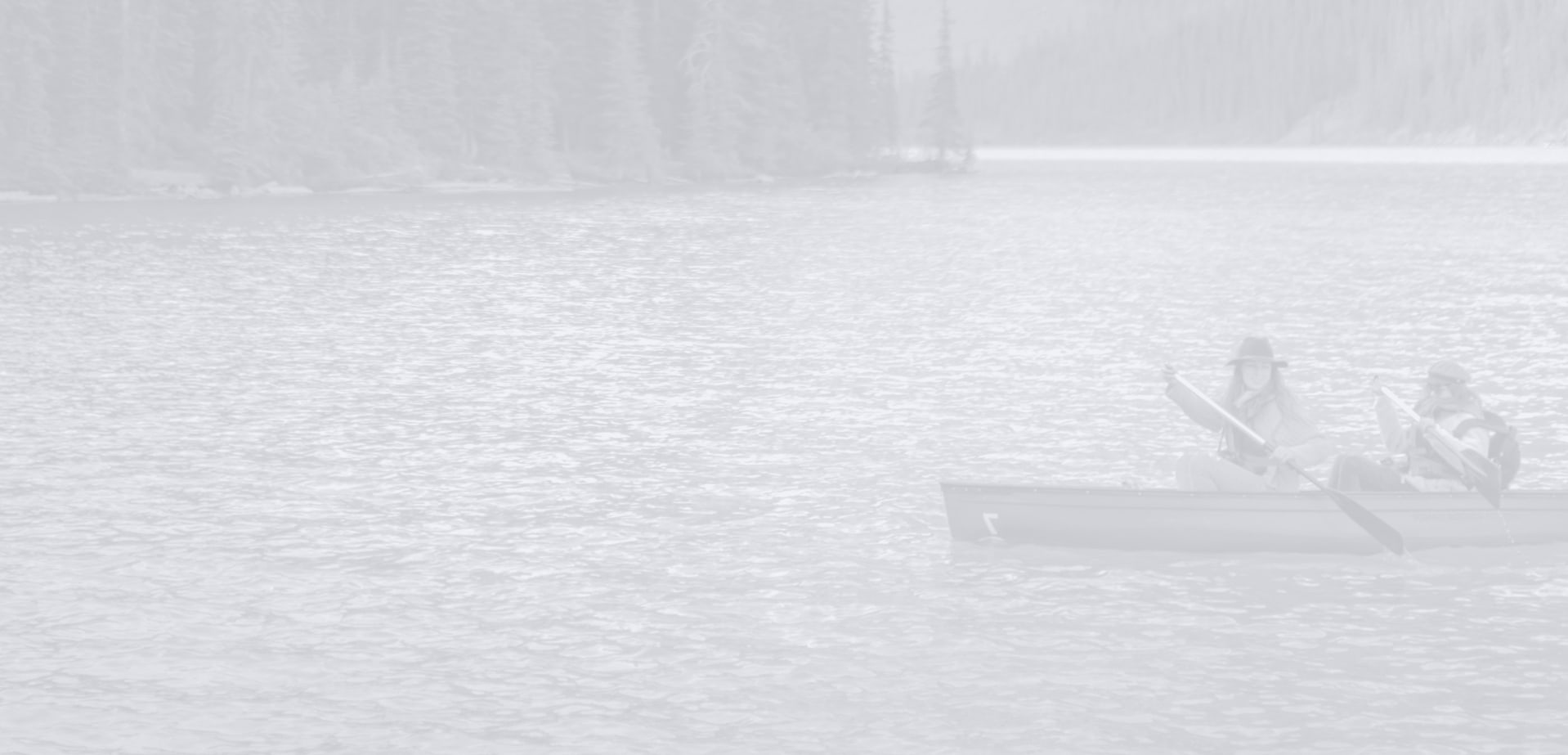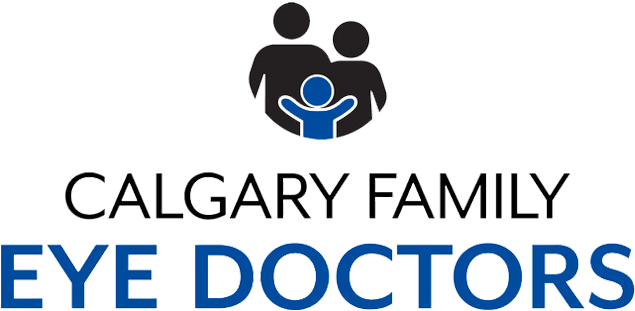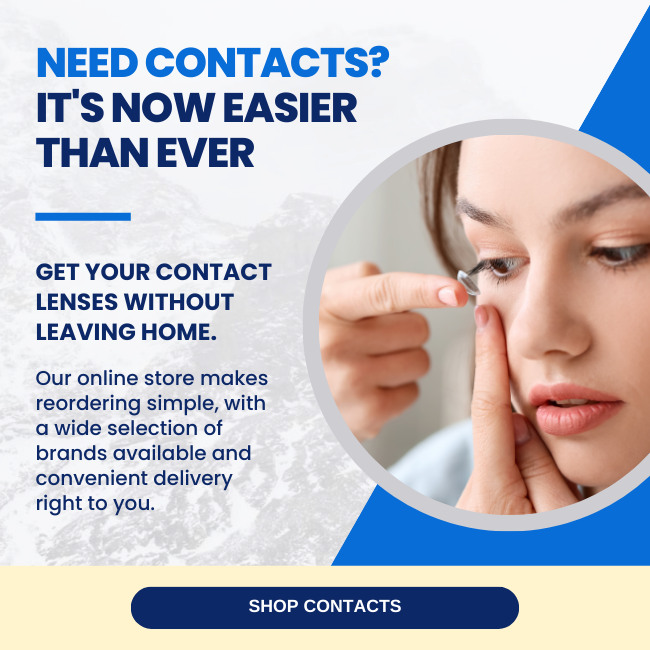Vision Health for Infants
Infants experience a lot of growth in their early years. They’re learning how to use their bodies, including their eyes. Visual skills are necessary for many everyday things your baby is learning. Visual skills include tracking object movement, recognizing faces, and hand-eye coordination.
Every child develops differently. But vision development milestones can help eye care providers and parents understand how their child is progressing. When babies have problems developing specific visual skills, it can indicate a problem with their eye health or vision.
Children’s eye exams are essential for assessing how a child’s vision is developing. Regular eye exams allow optometrists to track changes and recommend treatment, including eyeglasses.
First Eye Exam
Determining whether your baby needs glasses starts with their first eye exam. The Canadian Association of Optometrists (CAO) and the Alberta Association of Optometrists (AAO) recommend infants should have their first eye exam between 6–9 months. Children should also have at least one eye exam between 2–5 years of age.
The recommended ages relate to how a child’s vision usually develops. Optometrists can evaluate an infant’s vision depending on how they compare to children in their age group and compare to previous assessments of their eye health. In addition, optometrists can understand an individual’s unique eye care needs by monitoring changes and progression.
By 5-7 months, babies have moved through multiple vision-related milestones. Notably, by the time of their first recommended eye exam, children can typically:
- Recognize faces & objects
- See full colour & favour colours
- See images or objects a few feet away
- Turn their head to follow objects
Between 7–12 months, infants can:
- Play peek-a-boo
- Perceive smaller objects
- See nearby objects in-depth (depth perception)
- Track fast-moving objects
During an infant’s first eye exam, they typically haven’t developed depth perception, clear distance vision, fine motor skills, or the ability to focus on objects closer than 2 feet. So, unsurprisingly, babies in this age group are unlikely to need glasses for myopia (nearsightedness) or hyperopia (farsightedness) as they haven’t developed those skills.
Testing distance or close vision can be more accurately evaluated by the time of their second recommended eye exam, between 2–5 years of age. Although optometrists recommend at least one exam at this time, children may need additional eye exams if they have eye problems.
Between 2–3 years, infants have improved depth perception, the ability to change focus distance (near or far), and develop binocular vision. At 3–4 years old, an infant’s distance vision is clearer and typically nearing 20/20. Infants can also see objects a few inches from their face, recognize complex shapes, and develop gross motor skills.
A children’s eye exam between 2–5 years of age can assess if your baby needs glasses for correcting distance or close-up vision. However, babies may be prescribed glasses earlier for other eye problems, such as amblyopia (lazy eye).
Signs & Symptoms of Visual Problems
Optometrists have the education and training to assess visual problems, but what can parents do at home? There are signs and symptoms parent’s can monitor to help determine when they should schedule a children’s eye exam.
Common signs and symptoms to watch for include:
- An eye turning in or out
- A lack of concentration (compared to age group)
- Avoiding books, TV, or vision-based activities
- Covering or closing one eye
- Eye rubbing
- Frequent squinting or blinking
- Holding objects close to see
- Light sensitivity
- Red, itchy, or watering eyes
- Tilting head to see
Book a children’s eye exam if you notice any of these symptoms. Even if your child has 20/20 vision, regular eye health evaluations are essential for monitoring the health and development of their visual system.
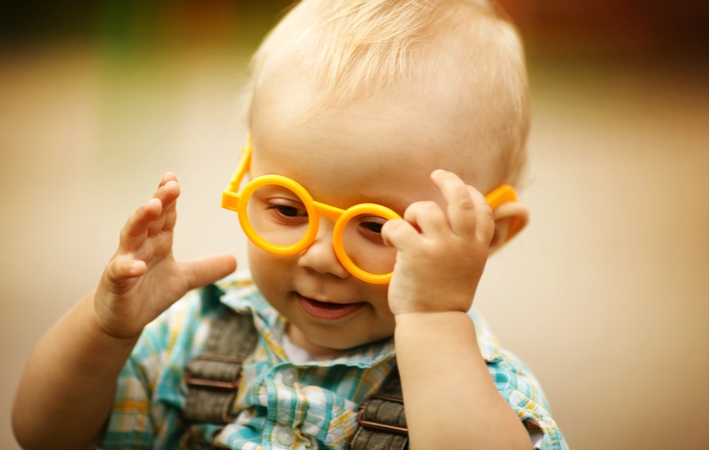
A Child’s First Glasses
Wearing glasses for the first time can be a strange experience for anyone. Still, it can be particularly challenging for infants. Parents can usually explain the benefits and rules to an older child. But a baby is more likely to consider their new glasses a toy.
Initially, your infant may resist wearing glasses. They may have gotten used to how their eyes normally see, making seeing through glasses a strange visual experience. It can take up to 2 weeks to get used to wearing glasses or a new prescription.
Babies’ glasses are designed differently. The materials are made for curious and clumsy, so a bit of pulling or even the occasional toss is less likely to cause damage. Additionally, glasses for infants and toddlers can include an elasticized band or a wrap-around design to help keep the glasses in place.
If your infant is having trouble wearing their first glasses, ask your optometrist for tips. It may take time, but your child will adjust to their new way of seeing.
Eyewear for All Ages
Keeping your baby’s eyes healthy can benefit their sight and overall health. About 80% of a child’s learning is visual. So determining a child’s vision and eye care needs early can help set them up for success.
Calgary Family Eye Doctors provides exceptional eye care for all ages. When your baby needs glasses, talk to our team! We can recommend treatment appropriate for their unique eye care needs. Visit us today!
